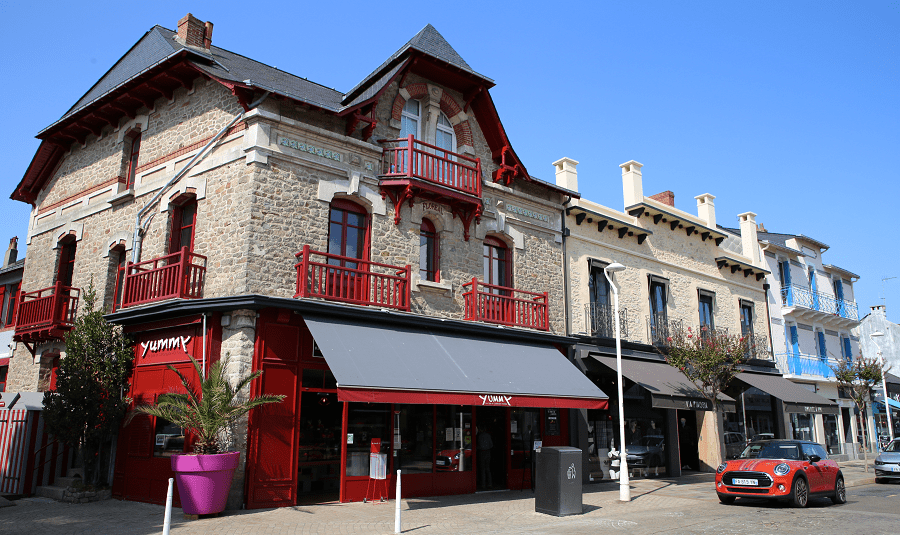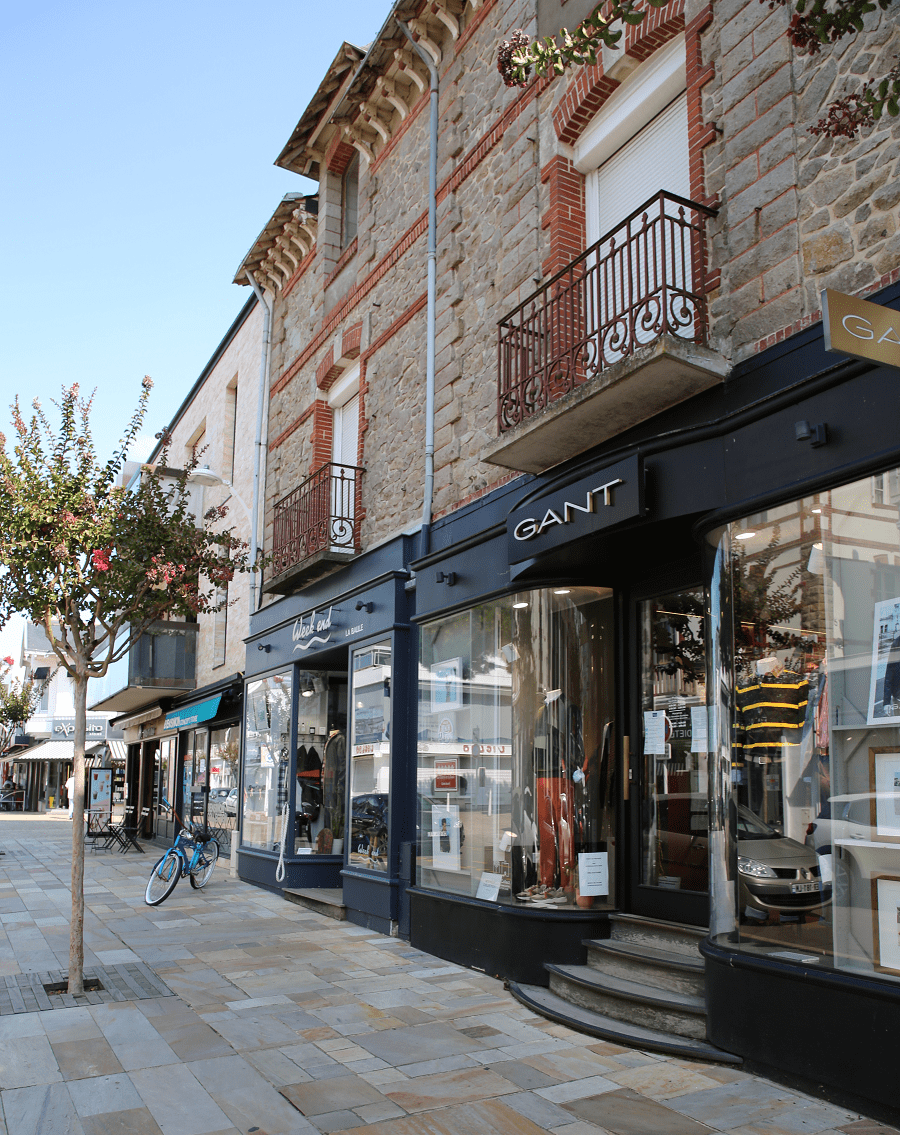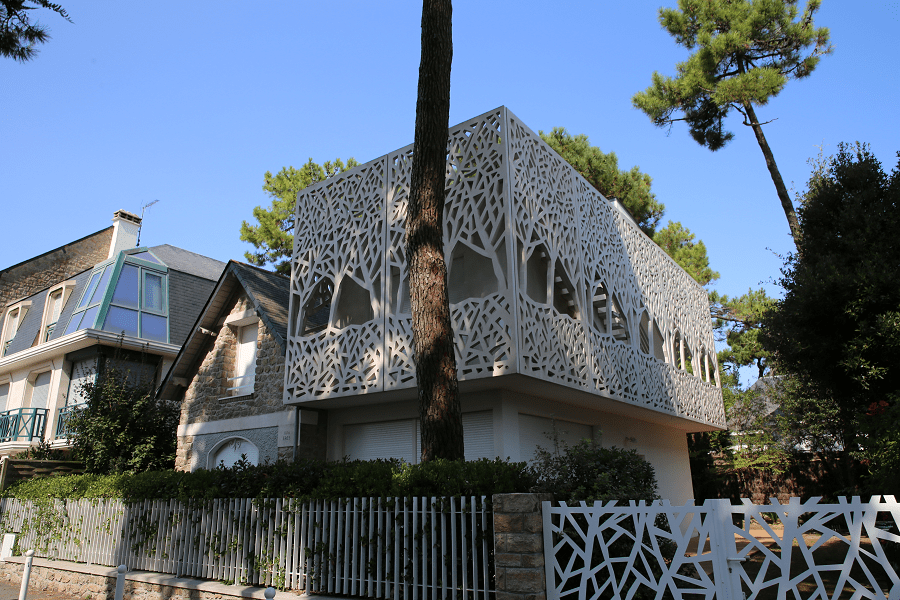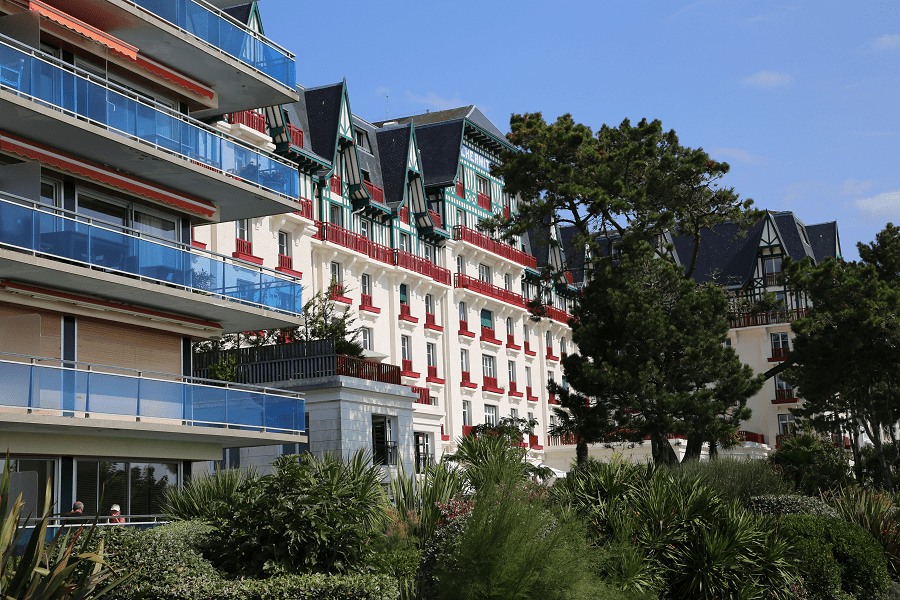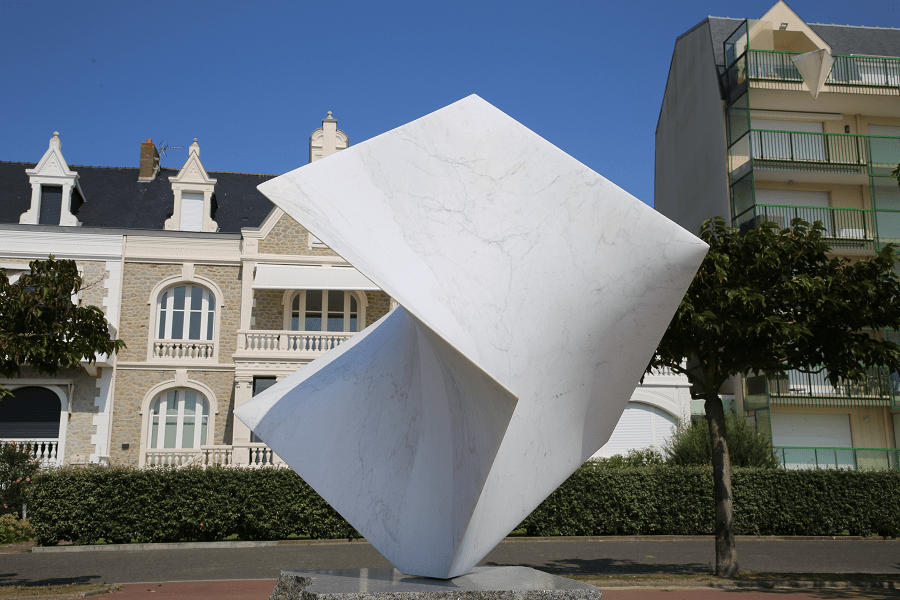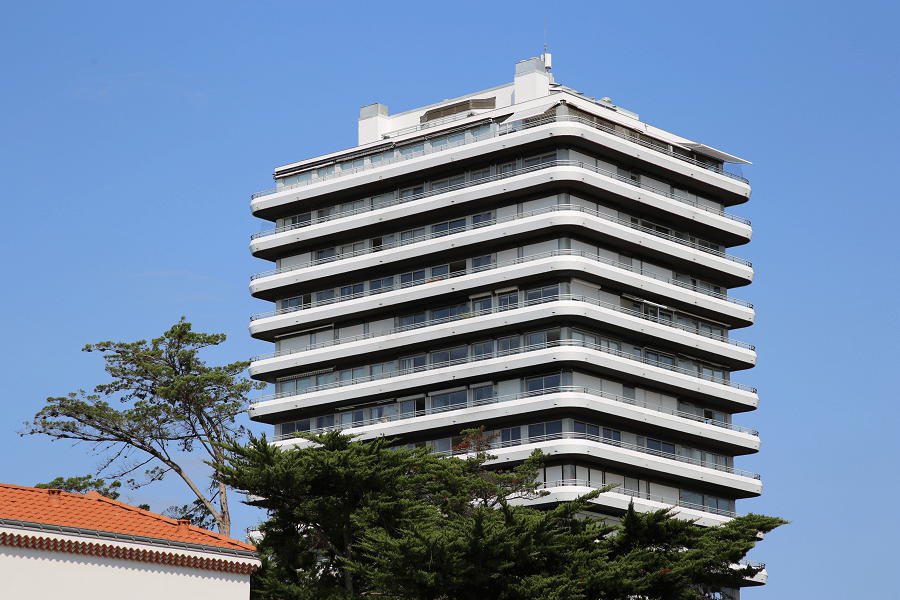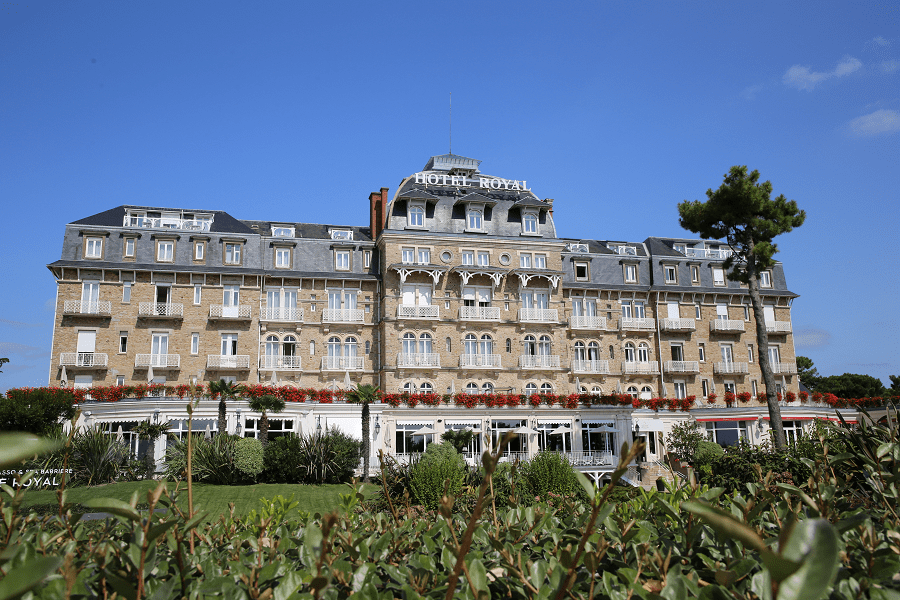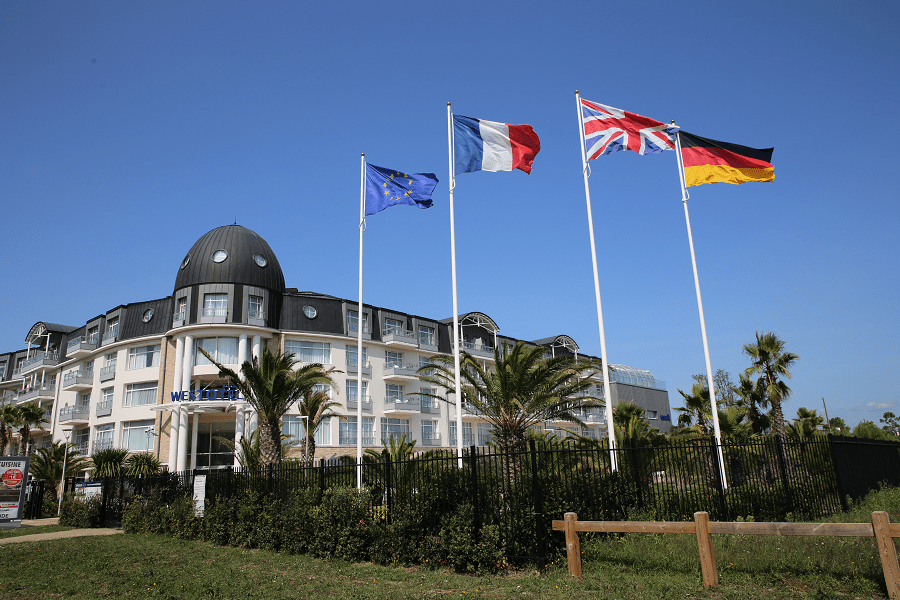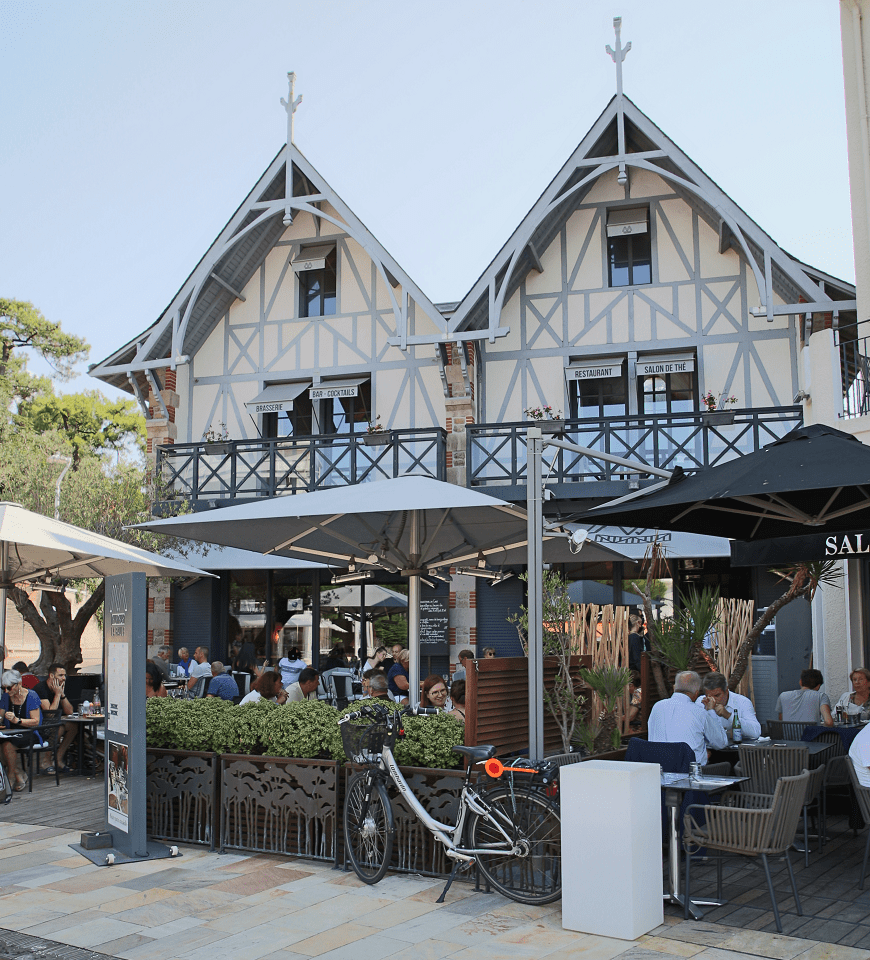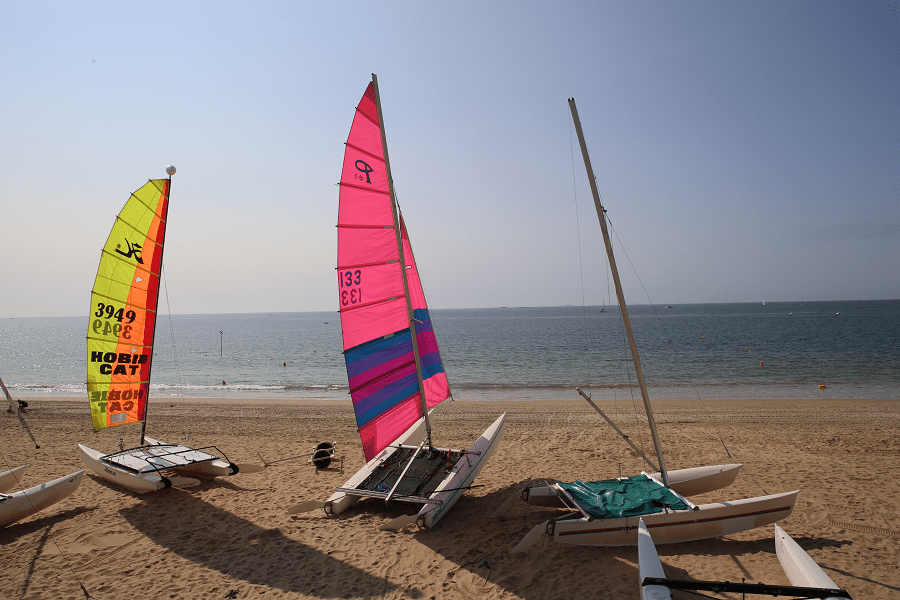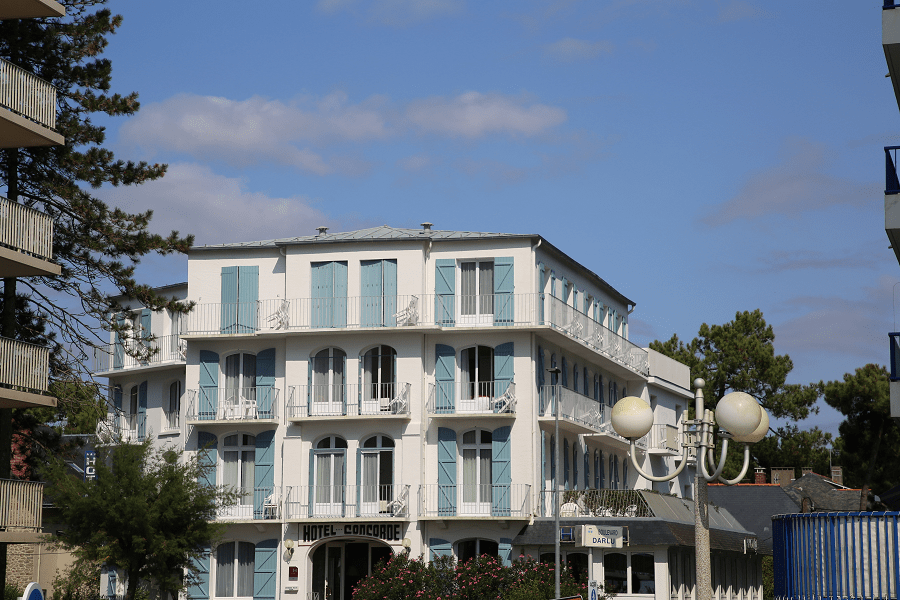La Baule-Escoublac (Fr. La Baule-Escoublac) is a town in the west of France, in the Loire-Atlantique department, in the Pays de la Loire region. Located on the Atlantic coast, it is part of the Côte d’Amour, between Le Pouliguen and Pornichet resorts.
La Baule-Escoublac can be included in the TOP 5 best Atlantic resorts of France alongside Biarritz, Arcachon, Les Sables-d’Olonne and Royan. Despite this, La Baule is still virtually unknown outside France.
It first appears in history through one of its villages, Escoublac, from the ninth century. It probably had to be moved twice and then rebuilt after almost total destruction, first in the fifteenth century and then at the end of the eighteenth century.
At the beginning of the nineteenth century, investors understood the potential of the bay of Pouliguen, which links Pornichet to Pouliguen and decided to fix the structure of the coast – to subdivide them and to create a seaside resort on the long beach of more than 8 km.
La Baule was born, and the town will develop by the architects, such as Adrien Grave, Georges Lafont or Paul-Henri Datessen, to create an architectural heritage made up of villas and hotels in a mosaic of styles of neo-Gothic inspiration or medieval, regionalist or resolutely futuristic. Some streets and some neighbourhoods in the locality have retained the names of these investors, like André Pavie, Édouard Darlu, René Dubois, Jules Hennecart or Louis Lajarrige.
The town, which was also called Escoublac then Escoublac-la-Baule, acquired its final name of La Baule-Escoublac on 16 May 1962, at a time which marked the preference given to collective housing on the seafront, where buildings have gradually replaced villas. Since the 1960s La Baule has become much more democratized.
“La Baule” is the name used for the seaside resort in the twenty-first century.
The locality lives in the twenty-first century mainly from tourism, the tertiary sector representing the bulk of economic activity. It enjoys a renowned hotel infrastructure—with the economic presence of the Barrière group, a rich and protected natural environment, as well as a quality urban heritage which attracts many artists and sportsmen from the start of the twentieth century, like Guillaume Apollinaire, Sacha Guitry or William Grover-Williams.
Since then, it has developed a series of international events such as the Grand Prix automobile de La Baule, the International Jumping of France or the La Baule-Dakar race, launched in 1980 by the La Baule-Le Pouliguen nautical circle.
Architecture and main attractions
The urban and architectural heritage of La Baule is characterized by at least three qualitative levels which are the large hotels, the villas, castles or chalets and finally, the buildings and townhouses.
It was in 1886 that the Mauspha hotel was built in the Benoît district. It was soon followed in 1896 by the hotel of the Verneuil Institute, intended for the parents of children treated at the institute. The latter became the Royal Hotel from 1902.
Ferdinand Ménard made the main transformation of La Baule into an international resort. He built the Ker Causette and the Castel Marie-Louise hotels (Belle Époque-style mansions) and he was behind the creation of the Tennis Club and, from 1925, the construction of the Hermitage hotel. This last hotel is an Anglo-Norman style palace which has 240 rooms and apartments.
The hotel infrastructure continues to develop rapidly until the eve of the Second World War.
In 1931, the seaside resort had 180 hotel establishments. The Le Celtic palace was inaugurated that year.
All the villas—characterized either by a seafront location or on an isolated plot—display a multiplicity of styles that come in four main families: historicist, regionalist, twentieth century and finally, contemporary.
The historicist style which developed in La Baule in the nineteenth century is eclectic and of neo-Gothic and medieval inspiration. The architects Ferdinand Ménard, Émile Le Bot, Georges Dommée or even Georges Lafont—who notably drew the plans for the villa Ker Vary in 1896, the halls in 1912 and the villa Pax—follow in the footsteps of Viollet-le-Duc (Eugène Emmanuel Viollet-le-Duc was a French architect and author who restored many prominent medieval landmarks in France, including those which had been damaged or abandoned during the French Revolution).
It was from the 1920s when the regionalist movement developed, borrowing its inspiration from Anglo-Norman, Basque and Landes, Breton, Provencal and colonial styles, often in the form of chalets or cottages.
The so-called “twentieth century” style is mixed with different faces: Art Nouveau, Art Deco, Rationalism, expressionism, futurism, Postmodernism, International Modernism, terraced houses and villas “steamers.”
Architecture of the twenty-first century in La Baule-Escoublac is characterized by a concern for integration into the environment and by the use of natural materials alongside hi-tech and industrial aesthetic.
The Banche lighthouse is the only monument in the town listed in the inventory of historical monuments.
The Saint-Pierre d’Escoublac church, inaugurated in 1786, and located in Escoublac, includes elements of medieval style such as its turret, and brings together certain elements of the old church buried under the sands, such as some stained glass windows, the high altar, and some statues. The Stations of the Cross dates from 1935, by the painter Xavier de Langlais.
The Notre-Dame church, built from 1931 to 1935 in the centre of the town, is neo-Romanesque style. The stained-glass windows in the choir, from the Janin-Benoît workshop in Nancy, are dedicated to the Virgin Mary.
The Sainte-Thérèse Church, built from 1928 on plans by Adrien Grave, then rebuilt in 1972 on the same site, breaks with the conventions of religious architecture in a style typical of its time.
The Saint-Anne chapel was built between 1880 and 1886 and extended by two side naves in 1903. Subsequently abandoned, the chapel was acquired by the city in 1981. In 1989, after renovation, the building was transformed into a cultural centre.
Casino
The La Baule-Escoublac casino is located opposite the beach overlooking the bay of Pouliguen. It belongs to the Barrière group, as well as three hotels owned by it and all located nearby, the Castel Marie-Louise, the Hermitage Barrière and the Royal-Thalasso.
It has a restaurant, “Le Bistrot”, a bar “B’Lounge” and a nightclub “L’Indiana”.
La Baule casino was built between 1879 and 1914. It was originally a centre dedicated to children with tuberculosis called the Institut Verneuil. Five years after the First World War, French and foreign tourists flock to the resort eager to relax. André Pavie transformed the establishment into a luxury hotel, the Royal-Thalasso, and installed the future casino in an annex. In addition to the gambling games available, concerts as well as balls and theatrical performances are given there.
François André took over the Pavie casino and transformed it into a casino in 1925 (architect Georges Vachon) and had luxury shops and palaces built around the establishment.
Museums
Founded in 1980, the Aeronautical Museum of the Côte d’Amour Peninsula (MAPICA) is, to this day, recognized around the world for its work in restoring and preserving aeronautical heritage. Its first restoration was that of a rare Caudron-Renault C-275 “Luciole” biplane; it earned him the Phoenix Honor Diploma from the Fédération Aéronautique Internationale.
More recently, in 1999, the Museum was again distinguished by the Aéro-club de France, a century-old institution and received the Grand Prix of the Aéro-club de France Coupe Zénith (named after the Swiss watchmaker, patron of the operation), for the magnificent restoration of a Morane-Saulnier 317 parasol monoplane.
Culture life and festivals
The program of events runs from spring to fall and is punctuated by a few nationwide events. In May, for example, the international show Jumping competition takes place. June begins with the International Dragons Trophy—sailing regattas organized by the yacht club of La Baule—and then sees a succession of old cars—the Cap La Baule rally—and various jumping derbies, polo, tennis, sailing and golf, all summer long.
July is marked by the literary meetings Ecrivains en bord de mer, while the International bridge festival takes place in August.
The Musiques à La Baule festival takes place from April to July, offering concerts of jazz, classical and gypsy music.
Created in 2010, La Baule jazz festival offers free concerts during July-August.
The Film and Music festival was born in 2014.
Beaches
The beach, which the town shares with the towns of Pornichet and Pouliguen – the cove it borders is known as “Baie du Pouliguen”—is over eight kilometres long; it is often locally claimed as being “the most beautiful beach in Europe.” It borders the districts of La Baule-les-Pins, La Baule-Center and Casino-Benoît.
From east to west, that is to say from Pornichet to Pouliguen, we successively meet the beach of the Grande Jument—it follows the beach of the Petite Jument, located in Pornichet, the beach of La Baule and finally the beach Benoît.
The foreshore of this area contains large quantities of cockles.
The Île des Évens stands out on the horizon 4 km north of the beach. It is a low reef above the water at high tide, which has a sandy beach and is roughly shaped like a triangle.
All beaches of the area are sandy and good for kids.
Restaurants
There are six restaurants in the Michelin guide list:
- Saint-Christophe, Place Notre-Dame, 19 – 39 EUR • Modern cuisine
- L’Eden Beach, 5 Esplanade Lucien-Barrière, 36 – 100 EUR • Fish and seafood
- Fouquet’s, 6 avenue Pierre-Loti, 36 – 80 EUR • Classic cuisine
- Castel Marie-Louise, 1 avenue Andrieu, 64 – 110 EUR • Modern cuisine
- 14 Avenue, 14 avenue Pavie, 41 – 78 EUR • Fish and seafood
- Carpe Diem, 29 avenue Jean-Boutroux, 23 – 56 EUR • Modern cuisine
Transport and how to get?
La Baule-Escoublac has two railway stations: La Baule-Escoublac located in La Baule and La Baule-les-Pins located to the east of the city. They are crossed by the Saint-Nazaire – Le Croisic line as an extension of the large radial from Tours.
On September 24, 1989, the TGV Paris-Nantes-Le Croisic line was put into service, connecting La Baule-Escoublac to Nantes in one hour and Paris in three hours.
The city has an aerodrome located to the east of the municipality (AITA code: LBY • ICAO code: LFRE). It is managed by the intercommunal syndicate of La Baule-Escoublac – Pornichet – Le Pouliguen. It is an aerodrome open to public air traffic (CAP).
Saint-Nazaire airport is located 15 km south-east of La Baule-Escoublac, in the commune of Montoir-de-Bretagne. It has an annual capacity of approximately 150,000 passengers, and is the operational and maintenance base for Eagle Aviation France.
International travel is available via Nantes Atlantique Airport, the biggest airport in western France.
Shortest distances by car:
From Biarritz (tolls): 5 h 56 min (625 km) via A63 and A10
From Bayonne (tolls): 5 h 44 min (611 km) via A63 and A10
From Dax (tolls): 5 h 28 min (573 km) via A10 and A83
From Nantes: 1 h 1 min (79.1 km) via N165 and N171
From Saint-Nazaire: 18 min (18.0 km) via D213
From Saumur (tolls): 2 h 12 min (223 km) via A11
From Bordeaux (tolls): 4 h 7 min (426 km) via A10 and A83
From La Rochelle (tolls): 2 h 27 min (216 km) via A83
From Toulouse (tolls): 6 h 19 min (664 km) via A62 and A10
From Carcassonne (tolls): 7 h 10 min (755 km) via A62
From Monaco (tolls): 11 h 55 min (1,241 km) via A7
From Nice (tolls): 11 h 37 min (1,219 km) via A7
From Cannes (tolls): 11 h 22 min (1,192 km) via A7
From Saint-Tropez (tolls): 11 h 21 min (1,165 km) via A7
From Marseille (tolls): 10 h (1,062 km) via A7
From Avignon (tolls): 9 h 22 min (978 km) via A71
From Montpellier (tolls): 8 h 34 min (904 km) via A62
From Béziers (tolls): 8 h 1 min (842 km) via A62
From Perpignan (tolls): 8 h 12 min (868 km) via A62
From Narbonne (tolls): 7 h 45 min (812 km) via A62
From Andorra (tolls): 8 h 47 min (845 km) via A62
Main information
Area: 22.6 sq. km
Population: 16 700
Languages: French
Currency: euro
Visa: Schengen
Time: Central European UTC +1
GPS coordinates: 47°17′12″N 2°23′27″W
See here best sea and ocean resorts of France and Spain (223 objects)




